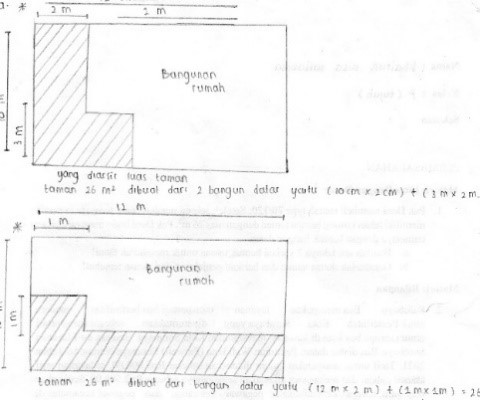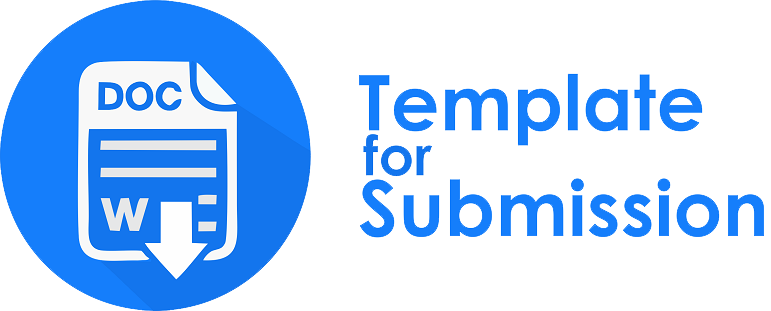EXPLORING CREATIVE THINKING SKILL
HOW DO STUDENTS WITH LOGIC-MATHEMATIC AND VISUAL SPATIAL INTELLIGENCE SOLVE CONTEXTUAL MATHEMATICS PROBLEMS?
Abstract
This study aims to describe students' abilities with visual-spatial and logical-mathematical intelligence in solving contextual mathematical problems. This qualitative research involved two eighth-grade students from a junior high school, each with a background in logical-mathematical and visual-spatial intelligence. The task consisted of two questions that asked students to create two park designs and two alternative payment methods for the "Suroboyo Bus." These findings show both subjects’ complete fluency and flexibility indicators in creative thinking. Subjects exhibit the ability to generate diverse solution pathways and apply various problem-solving strategies. Furthermore, the creative thinking skills displayed by the subject contribute to their comprehensive understanding of mathematical concepts and foster deeper engagement with the subject. The analysis results show that students with logical-mathematical intelligence were able to solve the problems well and came up with various alternative answers that other students did not consider. Students with visual-spatial intelligence were able to solve the problems successfully but did not find ideas to search for alternative answers beyond what was already presented. These findings indicate that both students with visual-spatial and logical-mathematical intelligence were capable of solving the given contextual problems, although there is still room for improvement
Downloads
References
Aizikovitsh-Udi, E. (2014). The Extent of Mathematical Creativity and Aesthetics in Solving Problems among Students Attending the Mathematically Talented Youth Program. Creative Education, 05(04), 228–241. https://doi.org/10.4236/ce.2014.54032
Arsyad, N., Nasrullah, N., & Safaruddin, S. (2020). Deskripsi Kemampuan Pemecahan Masalah Matematika Ditinjau dari Tingkat Kecerdasan Logis Matematis Siswa Kelas XI. Issues in Mathematics Education (IMED), 4(2), 136. https://doi.org/10.35580/imed15325
Asriningsih, T. M., Rahmawati, A., & Lailah, D. (2018). Tingkat Kemampuan Berpikir Kreatif Siswa dengan Kecerdasan Logis Matematis Sedang dalam Pemecahan Masalah Geometri. Jurnal Ilmiah Soulmath : Jurnal Edukasi Pendidikan Matematika, 6(2), 79–90. https://doi.org/10.25139/smj.v6i2.985
Azinar, J. A., Munzir, S., & Bahrun. (2020). Students’ logical-mathematical intelligence through the problem-solving approach. Journal of Physics: Conference Series, 1460(1), 012024. https://doi.org/10.1088/1742-6596/1460/1/012024
Dilekçi, A., & Karatay, H. (2023). The effects of the 21st century skills curriculum on the development of students’ creative thinking skills. Thinking Skills and Creativity, 47, 101229. https://doi.org/10.1016/j.tsc.2022.101229
Dwi, R., Manuharawati*, M., & Khabibah, S. (2022). Activist Learners’ Creative Thinking Processes in Posing and Solving Geometry Problem. European Journal of Educational Research, 11(1), 117–126. https://doi.org/10.12973/eu-jer.11.1.117
Faturohman, I., & Afriansyah, E. A. (2020). Peningkatan Kemampuan Berpikir Kreatif Matematis Siswa melalui Creative Problem Solving. Mosharafa: Jurnal Pendidikan Matematika, 9(1), 107–118. https://doi.org/10.31980/mosharafa.v9i1.562
Fitrianawati, M., Sintawati, M., Marsigit, & Retnowati, E. (2020). Analysis toward relationship between mathematical literacy and creative thinking abilities of students. Journal of Physics: Conference Series, 1521(3), 032104. https://doi.org/10.1088/1742-6596/1521/3/032104
Hadar, L. L., & Tirosh, M. (2019). Creative thinking in mathematics curriculum: An analytic framework. Thinking Skills and Creativity, 33, 100585. https://doi.org/10.1016/j.tsc.2019.100585
I. Casing, P., & B. Roble, D. (2021). Students’ Mathematical Creative Thinking Ability with Posing-Exploring-Doing-Evaluating (PEDE) Productive Failure Model in New Normal. American Journal of Educational Research, 9(7), 443–448. https://doi.org/10.12691/education-9-7-8
Qadri, L., Ikhsan, M., & Yusrizal, Y. (2019). Mathematical Creative Thinking Ability for Students Through REACT Strategies. International Journal for Educational and Vocational Studies, 1(1), 58. https://doi.org/10.29103/ijevs.v1i1.1483
Siswono, T. Y. E. (2010). Leveling Students’ Creative Thinking In Solving And Posing Mathematical Problem. Journal on Mathematics Education, 1(1), 17–40. https://doi.org/10.22342/jme.1.1.794.17-40
Siswono, T. Y. E. (2018). Pembelajaran Matematika Berbasis Pengajuan Masalah dan Pemecahan Masalah. PT. Remaja Rosdakarya.
Suherman, S., & Vidákovich, T. (2022). Assessment of mathematical creative thinking: A systematic review. Thinking Skills and Creativity, 44, 101019. https://doi.org/10.1016/j.tsc.2022.101019
Widiana, I. W., & Jampel, I. N. (2016). Improving Students’ Creative Thinking and Achievement through The Implementation of Multiple Intelligence Approach with Mind Mapping. International Journal of Evaluation and Research in Education (IJERE), 5(3), 246. https://doi.org/10.11591/ijere.v5i3.4546
Yayuk, E., Purwanto, P., Rahman, A., & Subanji, S. (2020). Primary School Students’ Creative Thinking Skills in Mathematics Problem Solving. European Journal of Educational Research, 9(3), 1281–1295. https://doi.org/10.12973/eu-jer.9.3.1281
Yazar Soyadı, B. B. (2015). Creative and Critical Thinking Skills in Problem-based Learning Environments. Journal of Gifted Education and Creativity, 2(2), 71–71. https://doi.org/10.18200/JGEDC.2015214253
Yuliati, F. A., Murtianto, Y. H., & Nursyahidah, F. (2021). Profil Berpikir Kreatif Siswa SMP Ditinjau dari Kemampuan Spasial dan Kemampuan Logis Matematis. Imajiner: Jurnal Matematika dan Pendidikan Matematika, 3(5), 418–427. https://doi.org/10.26877/imajiner.v3i5.7828
Yuniarti, A. P., Pramudya, I., & Slamet, I. (2021). Analysis of Mathematical Creative Thinking Skill in Student with Kinesthetic Learning Style. International Journal of Multicultural and Multireligious Understanding, 8(4), 128. https://doi.org/10.18415/ijmmu.v8i4.2451

Copyright (c) 2024 Hilaria Yesieka Ayu Wulandari, Rooselyna Ekawati, Ali Shodikin

This work is licensed under a Creative Commons Attribution-NonCommercial-ShareAlike 4.0 International License.
License and Copyright Agreement
By submitting a manuscript to Jurnal Pendidikan Matematika (JUPITEK), the author(s) certify and agree to the following terms:
- Originality and Authority: The submitting author is authorized by all co-authors to enter into this agreement. The manuscript describes original work that has not been published previously in a peer-reviewed journal, nor is it under consideration for publication elsewhere.
- Approval: Its publication has been approved by all author(s) and by the responsible authorities of the institutions where the work was carried out.
- Rights: The authors secure the right to reproduce any material that has already been published or copyrighted elsewhere.
- Licensing and Copyright: Authors retain the copyright to their work.
- License Grant: The authors grant Jurnal Pendidikan Matematika (JUPITEK) the right of first publication, with the work simultaneously licensed under the Creative Commons Attribution-NonCommercial-ShareAlike 4.0 International (CC BY-NC-SA 4.0).
- Self-Archiving: Authors are permitted and encouraged to deposit the published version of their article in institutional repositories, on their personal websites, and other academic platforms, with proper acknowledgment of its initial publication in Jurnal Pendidikan Matematika (JUPITEK).





.png)


